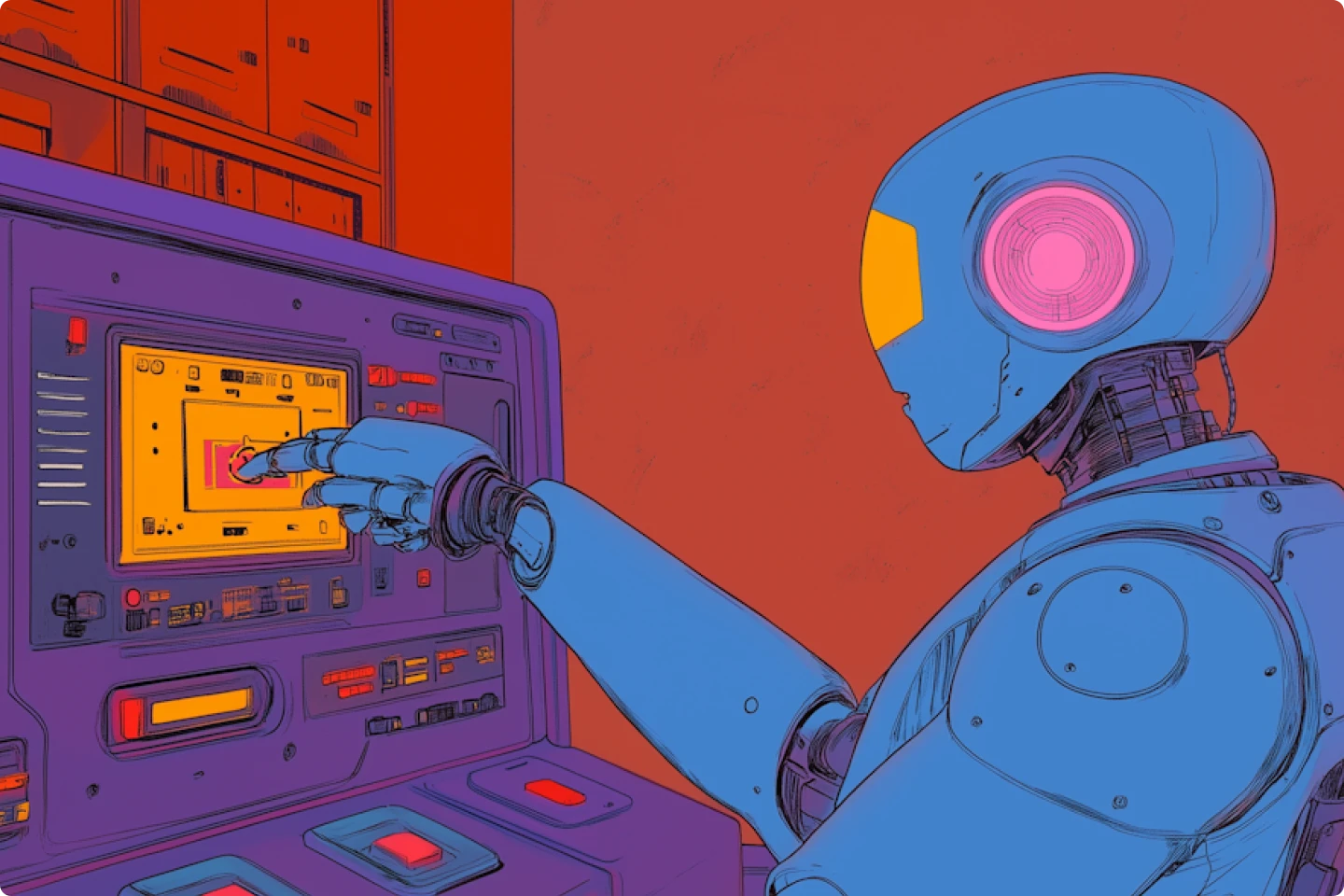Creating powerful designs with conceptual illustrations


Conceptual illustrations are a powerful way to turn complex ideas into stunning visuals. But what exactly are conceptual illustrations? Here's what you need to know.
When we think of design, a lot comes to mind—style, format, composition, colors, and maybe even a few stock images. But there’s something deeper in the creative world: conceptual illustrations.
They’ve got the power to evoke emotional reactions, tell stories, and completely transform how we see a subject matter.
Conceptual illustrations are not just visuals—they’re tools. They allow artists and designers to dive into abstract ideas, sparking imagination and thought.
Whether you’re a designer, AI enthusiast, a love of Midjourney and Midjourney alternatives, or just someone who loves creative work, understanding how to use conceptual illustrations can help you create projects that absorb your viewer's attention.
What exactly are conceptual illustrations?
Conceptual illustrations are all about storytelling, the focus isn’t just on how something looks, but what it means.
The art is in using visuals to communicate deeper ideas, connecting with people on a gut level.
Where traditional illustrations might focus on making things visually appealing, conceptual ones dig into the heart of an idea. Imagine a single image that could sum up a wide range of emotions or complex themes—that’s the magic of conceptual work. The goal is to evoke an emotional response, making the viewer feel something real.
Conceptual illustrations are more common than ever —from editorial designs, branding, advertising, and even on websites. Whenever a visual needs to communicate something bigger than what’s on the surface, conceptual illustrations step in.
Instead of just focusing on technical skills, they dive into cultural references, abstract ideas, and artistic styles that speak to specific audiences. As a result, they create images that resonate with viewers, giving them a richer experience.
Our favorite examples of conceptual illustrations
You'll see conceptual illustrations on fintech apps, the cover of major editorial publications, branding campaigns, and everywhere in between. While there are thousands of incredible examples, we found a few of our most recent favorites to share.
1. Illustrations by Lulu
Lulu is an anonymous contributor to Lummi. She has a variety of styles, but some of her best work comes in the form of illustrations. In one of her most recent collections of free illustrations, she created a series depicting a ghost doing some everyday shopping.

This collection is a specific example of how conceptual illustrations are useful for explaining and giving context to a complex subject.

She created the above illustration that touches on the theme of privacy. While the image itself hooks viewers in with bright colors and intriguing and bold designs, the message behind the visual is what makes it a design that lasts.
2. Illustrations by Joey Guidone
Joey Guidone, an Italian illustrator from Ivrea, is known for his bold and playful use of color, often mixing elements of nature and pop culture in his work. His talent shines through in conceptual illustrations like the one shown, where simple forms and contrasting sizes create striking visual metaphors.

His work, featured in major publications, demonstrates a unique ability to turn abstract ideas into clear and engaging imagery that tells a story without the need for words.
3. Illustrations by Tania Yakunova
Tania Yakunova, a Ukrainian award-winning illustrator based in London, UK, is known for her minimalist yet expressive style that blends surrealism with playful characters.
Since 2014, her work has spanned across various fields from commercial and branding illustrations to editorial pieces and international exhibitions.

Her distinctive approach brings a whimsical and thought-provoking feel to her projects, making her illustrations both captivating and full of narrative depth.
Why they matter to designers and creatives
With conceptual illustrations, you can make complex topics into powerful visuals, making it more personal and impactful.
Using conceptual illustrations, a designer can convey the essence of a company in a single image—what it stands for, what it values, and even how it wants to make people feel. No long paragraphs or over-explaining needed.
A well-done conceptual illustration can make a person stop scrolling, take a breath, and actually think about what they’re seeing.
Storytelling through conceptual art
Every piece of conceptual art begins with an idea. The role of the illustrator is to take that idea and craft it into something visual that captures its essence. Unlike traditional art, where beauty might be the goal, conceptual art focuses on the why behind the image.
Even complex subjects can be made simple through conceptual art. By using metaphor and symbolism, artists can explain tricky topics or abstract ideas without the need for lots of text or explanation.
Whether it's showcasing the loneliness of the digital world or the warmth of community, conceptual art nails down the emotional core of an idea.
Concept art vs. conceptual illustration
While conceptual illustrations focus on ideas and complex ideas, concept art is more about creating a visual blueprint for projects like movies, video games, or animation. Both require imagination and skill, but they have different goals.
Concept art is about setting the stage. Think of it as designing the entire world where the story takes place—characters, settings, the mood of the world, everything.
For designers working in industries like marketing, web design, or editorial design, concept art is essential.
Concept artists bring these worlds to life, paying attention to details like color, volume, and proportion to make characters or settings feel real.
But what makes concept art and conceptual illustration similar is their ability to evoke emotional reactions. Both take viewers on a journey, pulling them into a subject matter in ways that engage both the mind and heart.
Future of conceptual illustrations
Trends in art and design are always changing. Right now, we’re seeing a move toward minimalism and interactivity. Phygital illustrations—where digital and physical art blend—are making waves. People want experiences that feel immersive, interactive, and exciting.
With technology evolving at lightning speed, designers are exploring ways to make their work more engaging. This means using things like augmented reality (AR) or virtual reality (VR) to give illustrations a whole new layer of depth. Imagine an illustration that not only tells a story on paper but also comes to life when viewed through a screen.
Many would also say there is a growing focus on simplicity. Clean, straightforward designs are becoming more popular as people crave clarity in an often overwhelming digital landscape. But just because a design is minimal doesn’t mean it lacks depth. On the contrary, minimalist conceptual illustrations can pack a punch by distilling ideas down to their essence.
For artists, keeping up with these trends is key. Being aware of what’s next keeps your work fresh and relevant, whether you’re designing for clients or creating for yourself.
The takeaway
Conceptual illustrations aren’t just a trend—they’re a tool that every designer should have in their arsenal. By focusing on ideas and emotions rather than just aesthetics, these illustrations can transform how we experience art and design. They bridge the gap between seeing and feeling, offering a deeper connection to the subject matter.
Whether you’re looking to evoke emotional responses in your audience or tackle a wide range of abstract themes, conceptual illustrations are where it’s at. They give you the freedom to explore new creative possibilities, telling stories in ways that engage both the head and the heart.
Psychology of design: 10 tips for better visual impact






